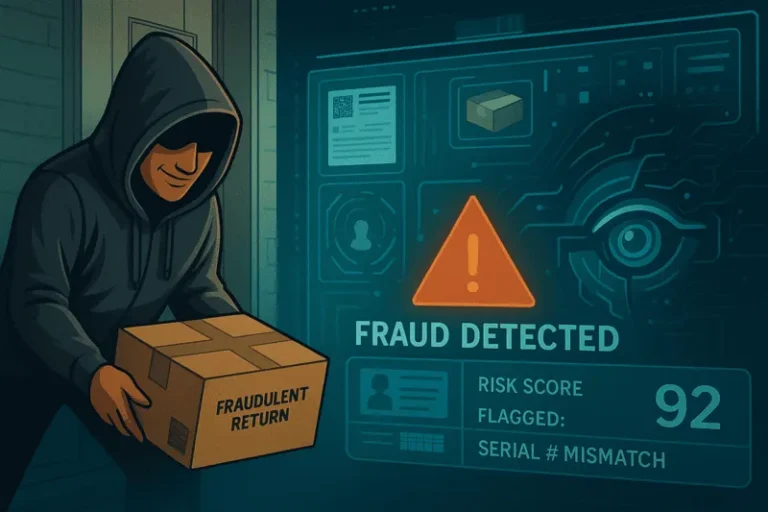What does RMA mean: Returns Merchandise Authorization (RMA) and Product Returns

Last updated on February 26, 2025

In this article
 8 minutes
8 minutes
- Understanding Return Merchandise Authorization
- Key Components of an RMA System
- Benefits of Implementing an RMA System
- RMA Software: Choosing the Best Solution
- Best Practices for RMA Implementation
- Common Challenges and Solutions
- Future Trends in RMA Management
- Measuring RMA Success
- Conclusion
- Frequently Asked Questions
In today’s retail and ecommerce landscape, efficient management of product returns is crucial for business success. Return Merchandise Authorization (RMA), is part of a systematic approach that enables businesses to handle product returns effectively while maintaining customer satisfaction and minimizing operational disruptions.
Understanding Return Merchandise Authorization
Issuing a Returns Merchandise Authorization (RMA) is part of a standardized process businesses use to manage product returns from customers. It serves as a formal mechanism for tracking, processing, and managing returned merchandise, ensuring both the customer and the business understand the return process and follow its requirements.
The RMA process typically begins when a customer requests a return. The business reviews the return request, and if approved, issues a unique RMA number to the customer. This number tracks the return throughout its lifecycle, from initial request to final resolution. The system helps businesses maintain organization, reduce errors, and provide better customer service while protecting against fraudulent returns.
Key Components of an RMA System
Authorization Process
The foundation of any RMA system is its authorization process. Before accepting return requests, businesses verify several factors. First confirm the product warranty status; the item needs to still be covered under warranty. Then ensure that the return request adheres to the company’s return policy. Assess whether the item meets return requirements (e.g., unopened, unused, or defective). Verify when and where the product was purchased, and any Proof of Purchase. Based on the return policy, the customer may be required to provide an invoice, receipt, or other evidence of the original purchase. Finally, determine whether the return is due to a defect, incorrect item shipped, or customer dissatisfaction.
RMA Documentation Requirements
Proper documentation is essential for a smooth returns process. Standard requirements for documentation include the original purchase invoice, product warranty card (if applicable), photos of damages (if relevant), customer contact information and the order’s shipping details.
Make Returns Profitable, Yes!
Cut shipping and processing costs by 70% with our patented peer-to-peer returns solution. 4x faster than traditional returns.
See How It WorksRMA Number Generation
Once the return request is reviewed and is confirmed as valid, each authorized return receives a unique RMA number, which serves multiple purposes, such as tracking the return throughout the process, linking to the original purchase, facilitating communication between customer service and warehouse staff by ensuring everyone is in communication around the same return, enabling quick status updates for customers, and maintaining accurate records for inventory and accounting.
Benefits of Implementing an RMA System
Implementing an RMA system helps businesses maintain order in the returns process, preventing lost returns and ensuring proper resolution. Formal authorization and documentation to identify patterns of abuse and ensure policy compliance also helps cut down on return fraud, saving money.
Having a codified system for returns also allows for data collection and analysis, providing valuable insights into common reasons for returns, identifying product failure rates, return processing efficiency metrics, cost analysis of return operations, and helping to quantify customer satisfaction levels.
An RMA system also helps keep track of returned inventory accurately; ensuring units are restocked or scheduled disposal and not lost track of. This then leads to more accurate stock levels. Warranty replacement management and coordination with suppliers for defective products help prevent pandemic spreading of returns, and helps with identifying problematic SKUs before they become a loss.
Such a system also provides benefits for customers; transparent return procedures, regular status updates, and clear expectations. Standardized procedures also result in quicker return authorizations, more efficient processing, and faster refunds or replacements.
RMA Software: Choosing the Best Solution
Choosing the right RMA software is crucial for efficient return merchandise authorization and customer satisfaction. A well-designed RMA software can streamline the return process, provide a seamless customer experience, and offer valuable insights for businesses to enhance product quality and customer service.
When selecting an RMA software, consider the following key factors:
- Ease of Use and Integration: The software should be user-friendly and integrate seamlessly with existing systems, such as inventory management and order management systems.
- Scalability and Flexibility: Ensure the software can accommodate business growth and adapt to changing needs.
- Cost-Effectiveness: Evaluate the return on investment by considering the software’s cost against the benefits it provides.
- Customer Support and Training: Opt for a solution that offers robust customer support and training to help businesses get the most out of the software.
- Automation Capabilities: The software should automate key aspects of the return process, such as RMA number generation and status updates.
- Insightful Analytics: Look for features that provide valuable insights into return trends, product quality, and customer service performance.
A robust RMA software should also offer features such as automatically generating unique RMA numbers to track returns efficiently, allowing customization of return policies and guidelines to fit business needs, providing real-time tracking and updates to keep customers informed throughout the return process, ensuring seamless integration with inventory management systems to keep stock levels accurate. It should also support various return types, including refunds, exchanges, and store credit. Finally, it should also facilitate effective communication with customers, providing support and updates throughout the return process.
By choosing the right RMA software, businesses can improve customer satisfaction, reduce returns processing time, and increase efficiency in their return merchandise authorization process. This not only enhances operational efficiency but also fosters customer loyalty and trust.
Convert Returns Into New Sales and Profits
Our peer-to-peer returns system instantly resells returned items—no warehouse processing, and get paid before you refund.
I'm Interested in Peer-to-Peer ReturnsBest Practices for RMA Implementation
Policy Development
Define return windows, acceptable product conditions, required documentation, shipping responsibilities, and refund options. Ensure warranty terms are clearly outlined, as they impact return eligibility and customer satisfaction.
Process Automation
Implement software to automate RMA numbers, track returns, update inventory, process refunds, and generate needed documentation and reporting. By minimizing the amount of human touches needed, the return process can minimize friction, reduce labor costs, and keep customer satisfaction high.
Staff Training
Proper preparation prevents poor performance. Ensure all relevant staff members understand the RMA procedures and policies, such as documentation requirements, customer service protocols, and inventory processing. This prevents complications or confusion internally, and ensures the customer has a seamless, successful experience with their return.
Communication Protocols
Establish clear communication channels for return authorization requests, status updates, and internal coordination. Having documentation or data hidden in the wrong location is frustrating and hurts the customer experience.
Common Challenges and Solutions
Processing Delays
High volume of returns can cause processing backlogs. This can hit especially hard during seasonal return spikes around holiday shopping. This can be mitigated by implementing automated systems, streamlining the return process, and setting realistic customer expectations.
Documentation Issues
Proper documentation helps prevent returns fraud. However, often legitimate customers can have incomplete or incorrect documentation. Providing clear instructions to customers, using digital forms with required fields, and implementing verification procedures to work around missing documentation helps ensure customer satisfaction while still protecting from returns fraud.
Inventory Management
Returns need to be manually reviewed and verified for resale before the items can be returned to inventory. Processing returns as they come into the warehouse can be time consuming and error prone. Integrating the RMA system with inventory management, establishing clear procedures for handling returns, conducting regular reconciliation of returns and inventory, and implementing barcode or RFID tracking all can help prevent inventory discrepancies.
No More Return Waste
Help the planet and your profits—our award-winning returns tech reduces landfill waste and recycles value. Real savings, No greenwashing!
Learn About Sustainable ReturnsFuture Trends in RMA Management
There are several rising trends in RMA management. The future of RMA management is increasingly digital, with advancements in mobile return initiation, AI-powered authorization systems, automated tracking and updates, digital documentation management, and real-time inventory updates. There is also a growing consumer emphasis on sustainability, focusing on environmentally friendly return processes, refurbishment programs, recycling initiatives, and waste reduction strategies.
Measuring RMA Success
There are several Key Performance Indicators (KPIs) for evaluating RMA effectiveness, such as Processing Time (average time from return request to authorization, total processing time to completion, Refund processing speed), Customer Satisfaction (return process satisfaction ratings, customer feedback scores, repeat customer rates after returns), Operational Efficiency (return processing costs, labor efficiency metrics, inventory accuracy rates), and Financial Impact (return rate analysis, cost per return processed, recovery value from returns, and impact on customer lifetime value).
Conclusion
An effective RMA system is crucial for modern business operations, particularly in retail and ecommerce. It streamlines the returns process, enhances customer satisfaction, and protects business interests. As technology evolves, RMA systems will become more sophisticated, offering improved automation, tracking, and customer service capabilities. Businesses that invest in robust RMA processes will be well-positioned to handle product returns efficiently while maintaining profitability and customer loyalty.
Frequently Asked Questions
What does RMA stand for?
Return Merchandise Authorization
Why does an RMA number help?
RMA numbers are unique identifiers used to track the return process lifecycle.
Do I need RMAs for my Returns Policy?
While RMAs are not needed, they do help facilitate the returns process and help prevent ambiguity.

Turn Returns Into New Revenue





